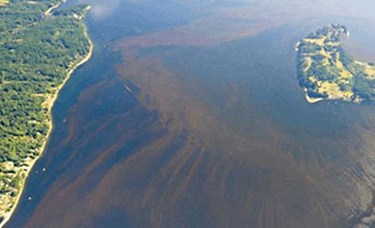NOAA Awards $1.7M For Harmful Algal Bloom Research To Protect Public Health From Toxins In Shellfish

Multi-year awards to focus on bloom prevention in seven states
NOAA has announced nine research grants will go to organizations around the country seeking to better understand and measure the toxicity of harmful algal blooms, known as HABs.
In the first year, $1.68M will fund research for projects in Alaska, California, Florida, Maine, Maryland, Ohio and Virginia. The grants are administered by NOAA’s National Centers for Coastal Ocean Science.
NOAA funding enhances state and regional monitoring with advanced harmful algae detection capabilities, including shellfish toxin tests. (Credit: Washington State Department of Ecology Marine Monitoring Unit)
Grant recipients will conduct research to identify conditions that increase a bloom’s toxicity; model toxin movement from the water into shellfish, fish and marine mammals; and improve toxin monitoring and forecasts. The dense scum, strong odors and toxins produced by HABs can contaminate drinking water, trigger fisheries closures and disrupt tourism.
“These projects will improve the ability of local managers to keep drinking water safe, and will aid monitoring for HAB toxins in seafood – two of the most pressing needs during bloom events,” said Nicole LeBoeuf, deputy director of NOAA’s National Ocean Service.“HABs occur in every state and these awards will have national significance for their management.”
A full list of the grant awards is available online.
Prior NOAA-funded research on HABs has produced tools that managers now routinely use to detect, forecast, and respond to HABs and their toxins. One past project developed a toxin monitoring protocol that enabled the opening of multimillion-dollar surf clam and ocean quahog fisheries in Georges Bank, Massachusetts, that had been closed to harvest for two decades.
NOAA’s National Centers for Coastal Ocean Science delivers ecosystem science solutions for NOAA’s National Ocean Service and its partners, bringing research, scientific information and tools to help balance the nation’s ecological, social and economic goals.
About NOAA
NOAA's mission is to understand and predict changes in the Earth's environment, from the depths of the ocean to the surface of the sun, and to conserve and manage our coastal and marine resources.
Source: NOAA
